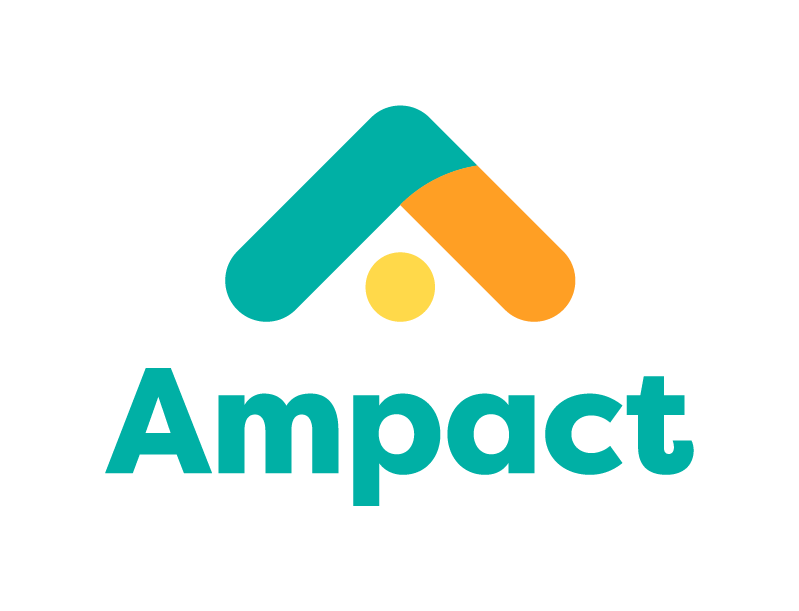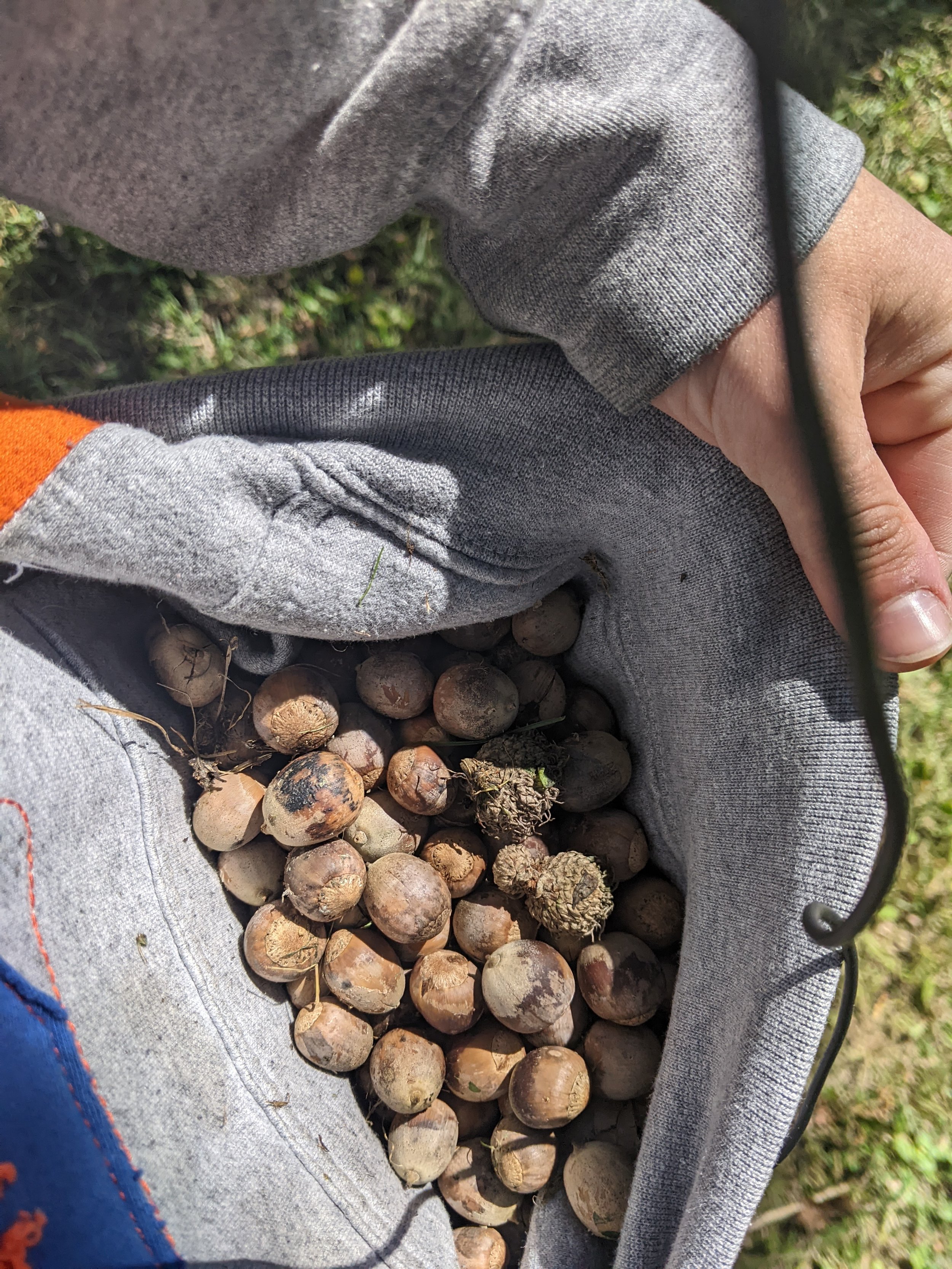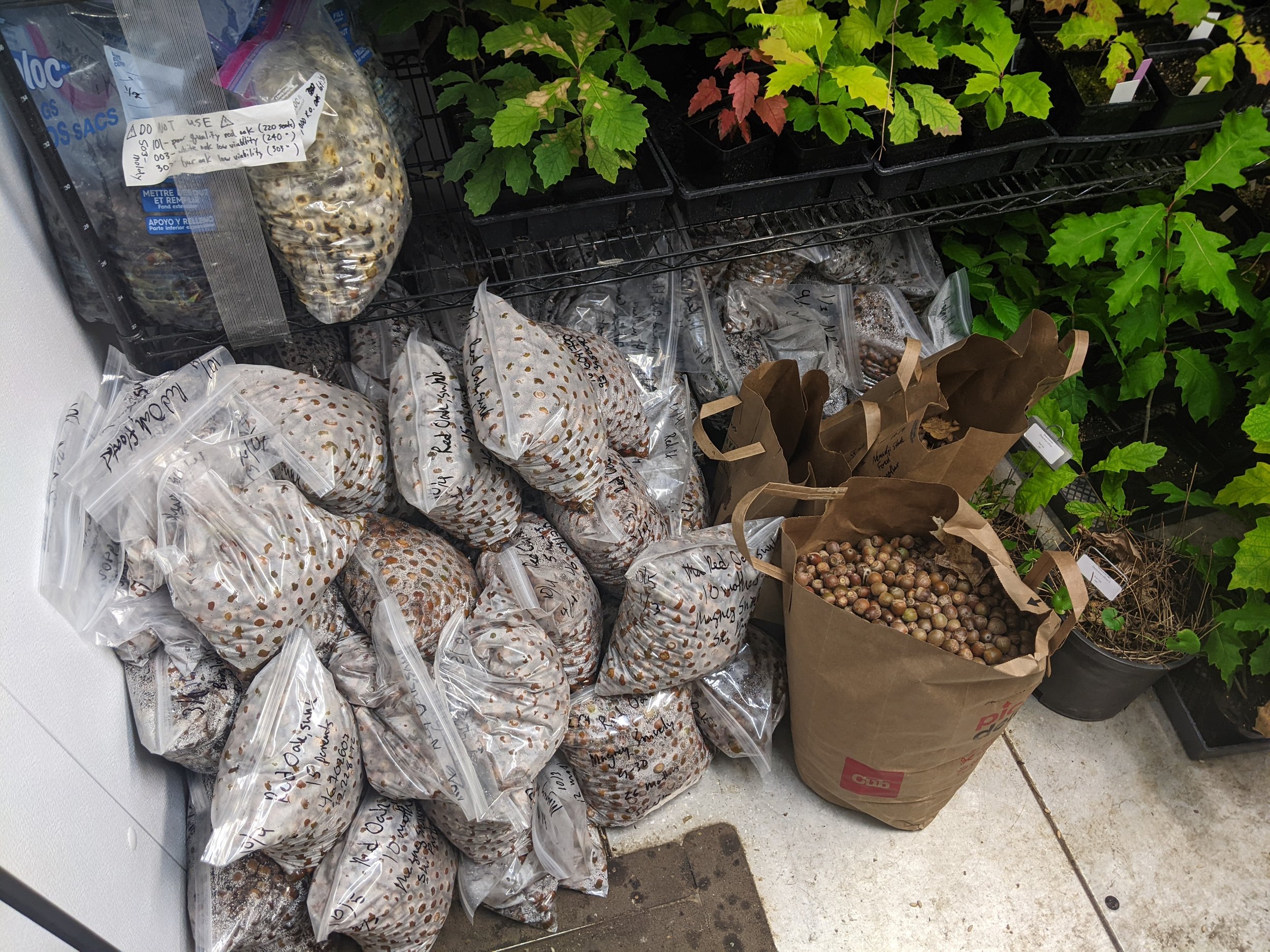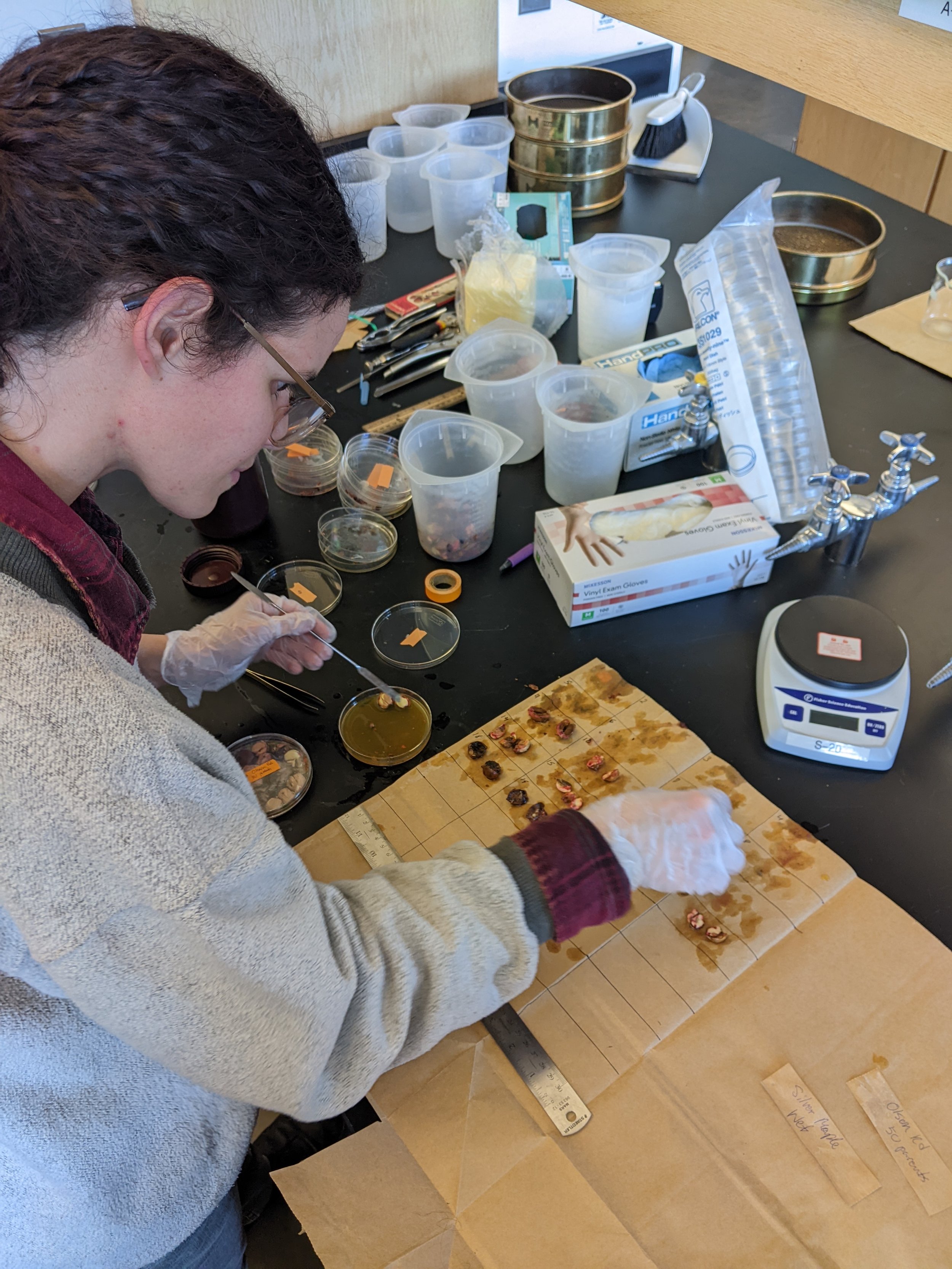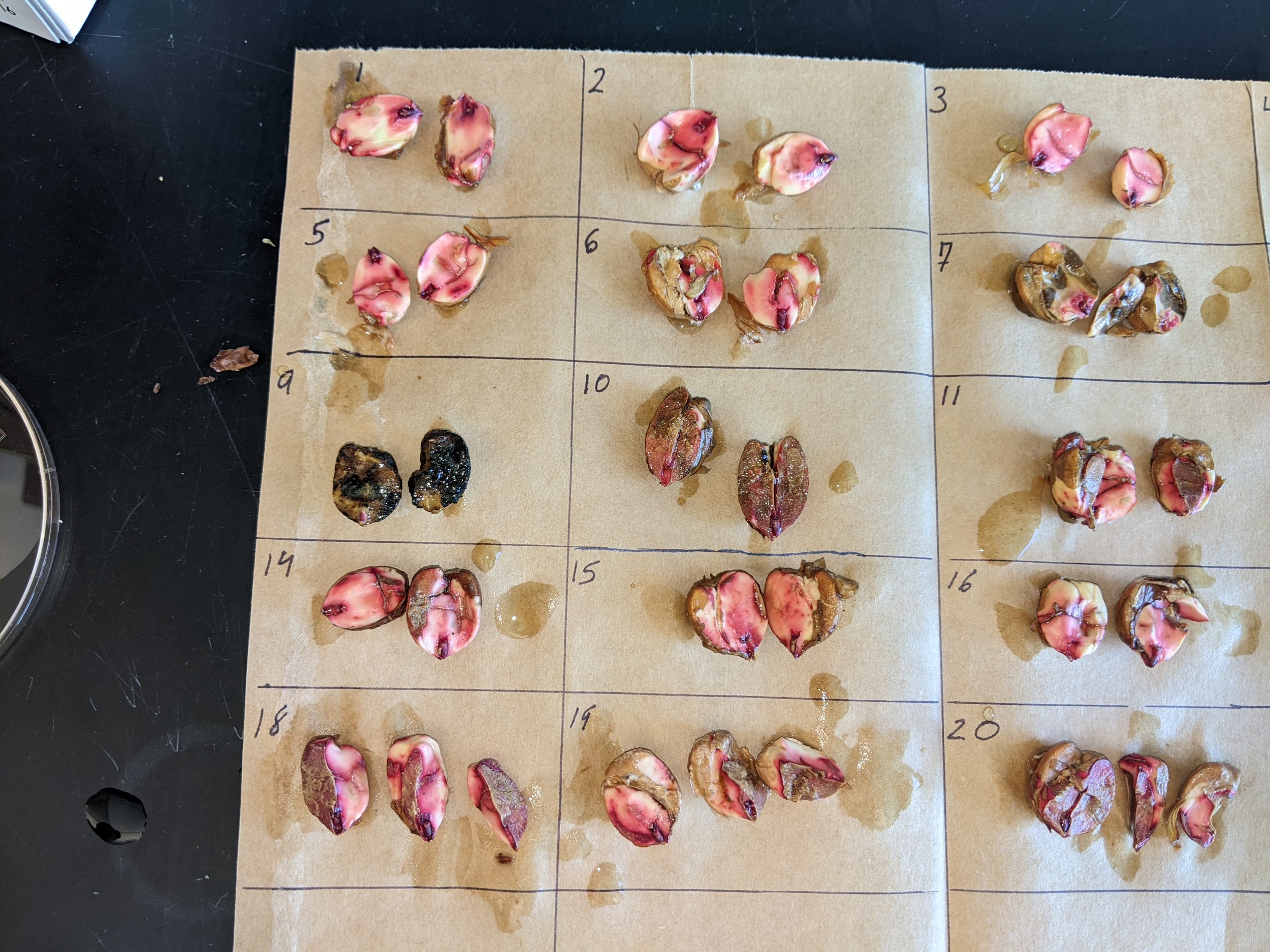Community Forestry member helps seed Minnesota's future forests
Sydney is a Community Forestry member serving at University of Minnesota Extension Northeast Regional Sustainable Development Partnership. Her role is to help local environmental organizations preserve and regrow tree canopy across the state. During her service term, her main project has been to collect 100 gallons of healthy acorns from a variety of oak trees in southern Minnesota. That’s equivalent to about 55,000 acorns!
Once the acorns are ready to start growing, Sydney’s site will give them to local farmers and environmental agencies who will use their knowledge and resources to sprout and plant them. Eventually, the trees from this project will reforest the north shore of Lake Superior.
Choosing the right acorns
Totaling about 550 acorns per gallon, Sydney had time to hone her eye for healthy ones before her site reached a hundred.
“The biggest teacher is experience, getting to a site and taking a big look at the seeds,” she says. “Are they chopped up as if they just got run over by a mower? Are there little broken off nut casing from squirrel damage? Do they look old, separated from their cap? I take a handful, roll them around, and look for any tiny pinholes. That’s indicative of a weevil. The more holes, the older the stock, and you might not get as many good quality seeds. I’ve noticed that newborn acorns have this dusting, velveteen covering on them. Those are very good quality.”
This one-on-one evaluation is crucial for harvesting a healthy crop.
“You could just round them all up with a rake into a bucket or a tarp, but then there’s extra work down the road if there are a bunch of not-so-good ones that I would have to sort out anyway. It ends up being lower-quality seed because I wasn’t so picky.”
With the help of some private collectors, Sydney’s site surpassed their goal of 100 gallons and collected over 55,000 acorns! But the project didn’t end there.
Testing their potential
Thanks to the extra support of their Community Forestry members, the organization had the capacity to conduct experiments on some seeds. They wanted to learn more about how to maximize the harvest’s growth when they are planted.
“For the northern red oaks, we take the inventory and put it into five-gallon buckets. We float them for at least an hour or two in water. Anything that floats up has airholes and could be rotten or weevilled,” Sydney explains. “It also is important because you need to put some moisture into the acorns so they can wait it out in a cold, moist environment and be planted the following spring.”
The seeds also underwent a chemical test that can estimate the odds that the acorns will grow. Sydney cracked the test seeds in half and soaked them in the chemical. Depending on where and how much it stained, her team could tell if the batch was likely to grow.
Making an impact
Throughout each stage of the project, Sydney spent many hours examining the acorns she collected. She used that time to be mindful of the potential she had to make a difference for generations to come.
"I have thousands of seeds passing through my hands — these little lifeforms that have the potential to be a forest for the future — and I won’t reap the benefits of them,” she says. “When I’m zoomed out for the day and ask, ‘Ugh, did I get anything done?’ I think, ‘This is scaffolding that will get these seeds into the ground,’ and that’s when it hits home that I’m doing something impactful.”
Get Involved
Members like Sydney are needed across the state of Minnesota to serve in 2023-2024! Learn more and apply by August 9 at ampact.us/community-forestry.

